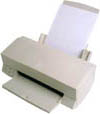The Count Noun
Recognize a count noun when you find one.
Nouns name people, places, and things. Many nouns have both singular and plural forms. If you can add a number to the front of a noun and/or put an s on the end of it, you have a count noun.
Consider these examples:
Beatrice offered Jeremy a chocolate-chip cookie.
Jeremy, an impolite pig, grabbed all seventeen cookies off the plate.
Cookie is a count noun. You can have one cookie, or you can be a pig like Jeremy and have seventeen cookies.
Some count nouns have irregular plural forms.
Most—but not all—plural nouns end in s. Those that end in a letter other than s are still count nouns if you can add a number in front.
Read this example:
Ten paparazzi chased Jeremy for an interview, but he alluded them to meet three young women who offered to sell him two magical geese.
Some nouns are noncount.
You cannot count all nouns. To make a noncount noun plural would be illogical.
Read the following sentence:
Later that night, Jeremy apologized for his rudeness, but his growling stomach stopped him from returning a single cookie.
Rudeness is an example of a noncount noun. Jeremy does not have five rudenesses. Such a statement would make absolutely no sense!
Review this chart contrasting count and noncount nouns:
Count Nouns Noncount Nouns hurricane(s)
chair(s)
smile(s)
bagel(s)
book(s)
assignment(s)weather
furniture
happiness
flour
information
homework
©1997 - 2025 by Robin
L. Simmons
All Rights Reserved.
